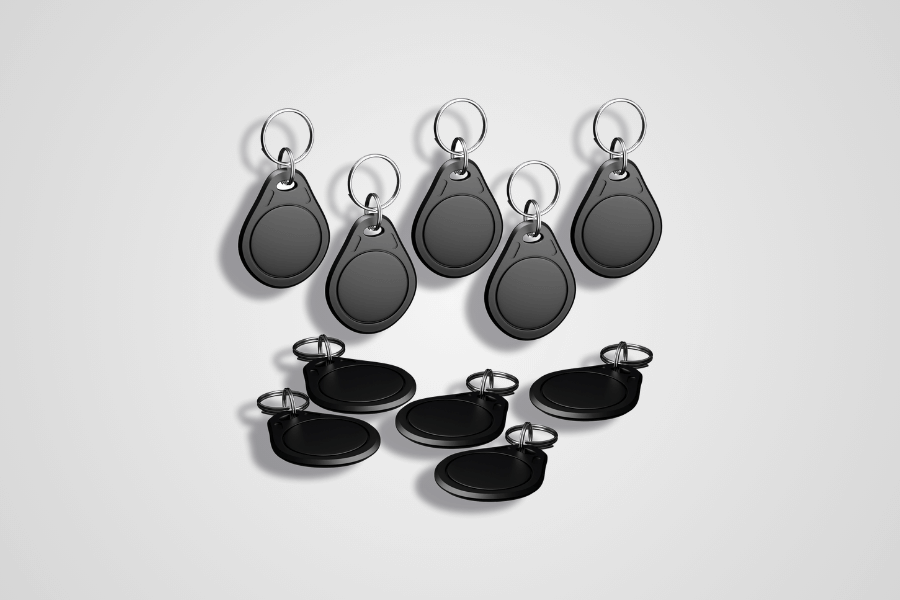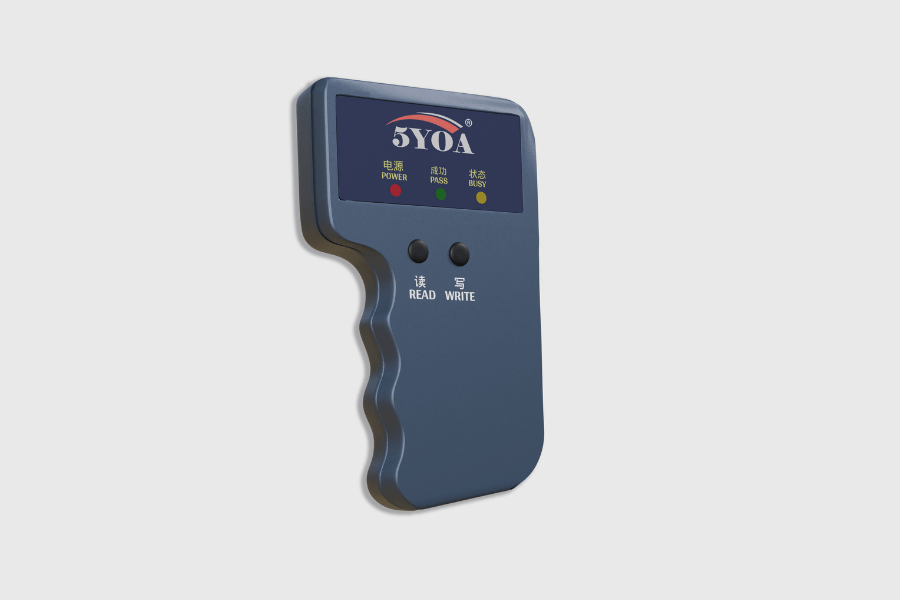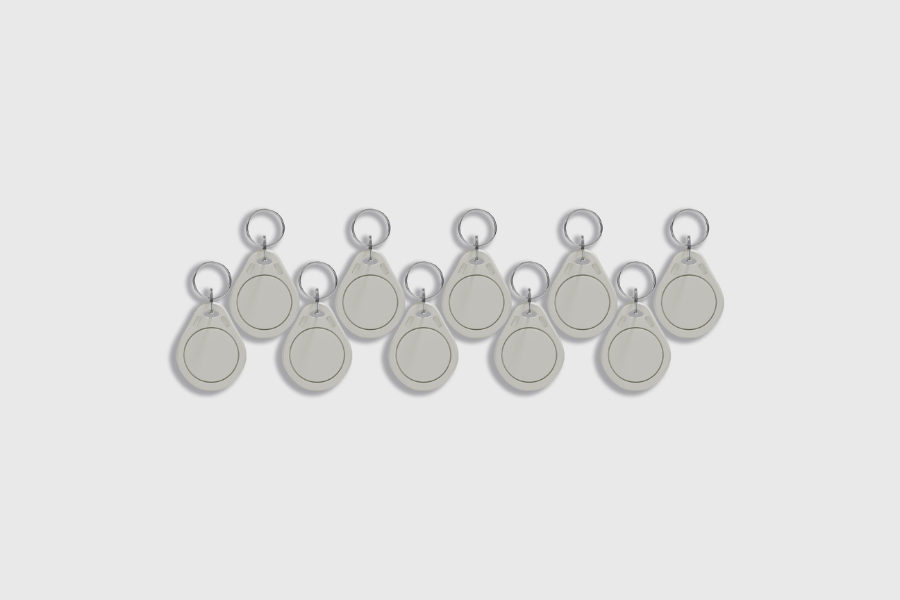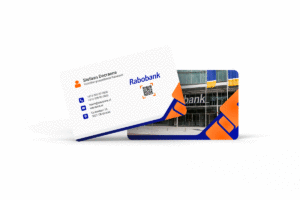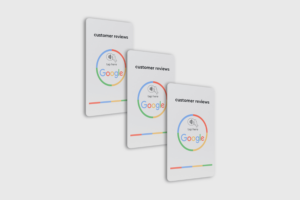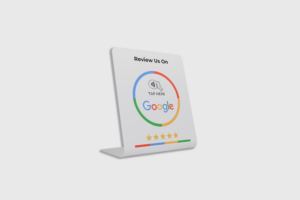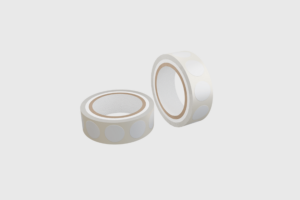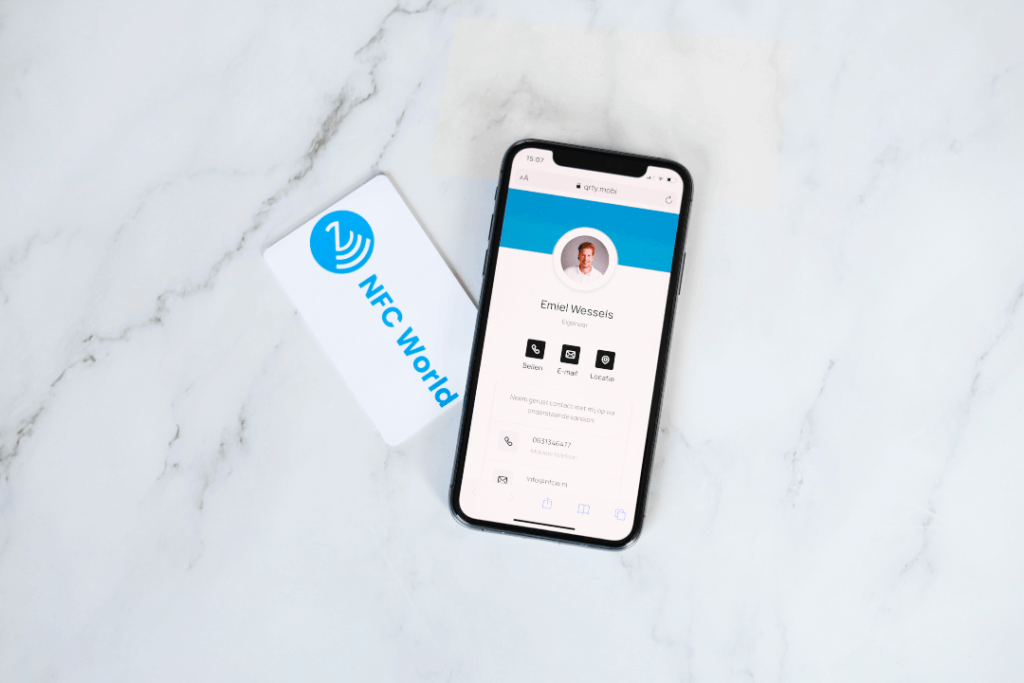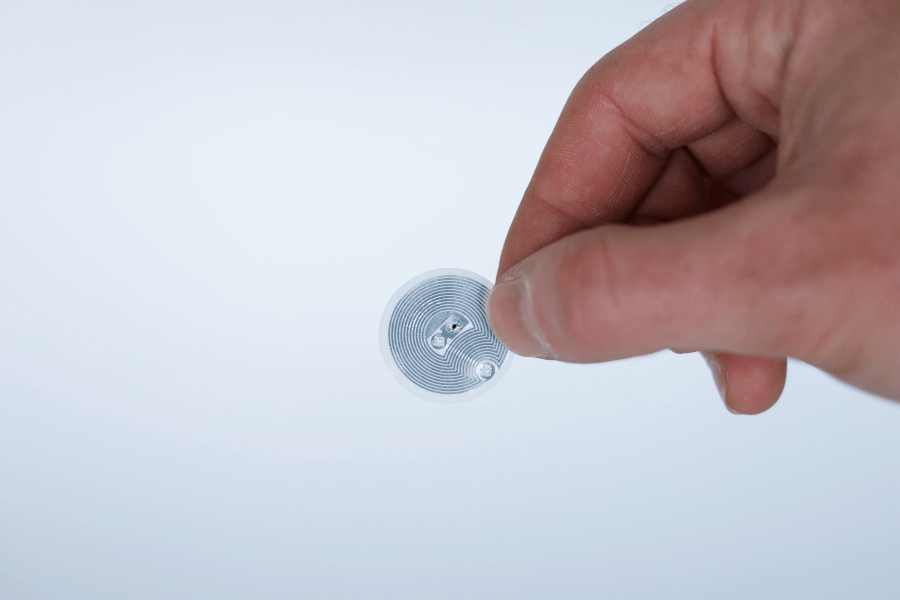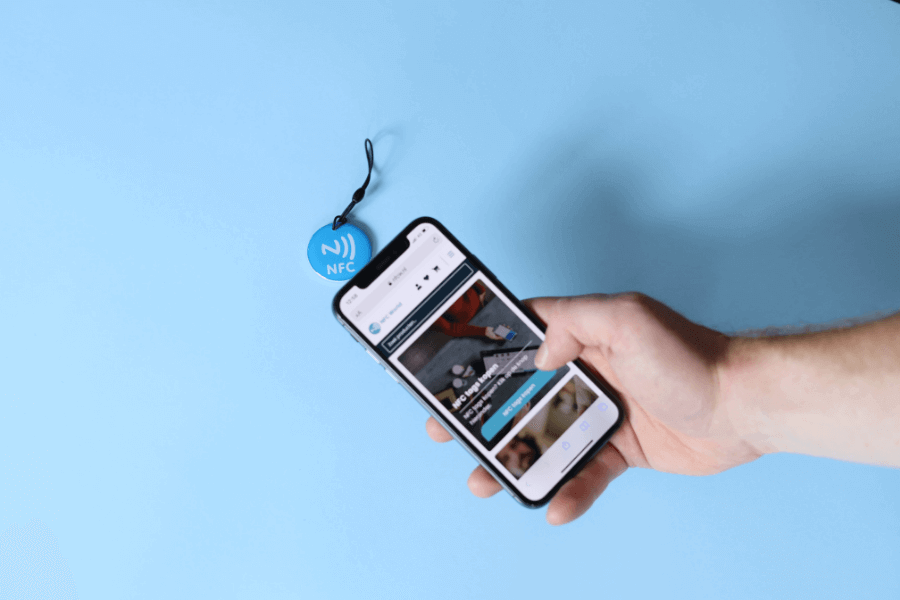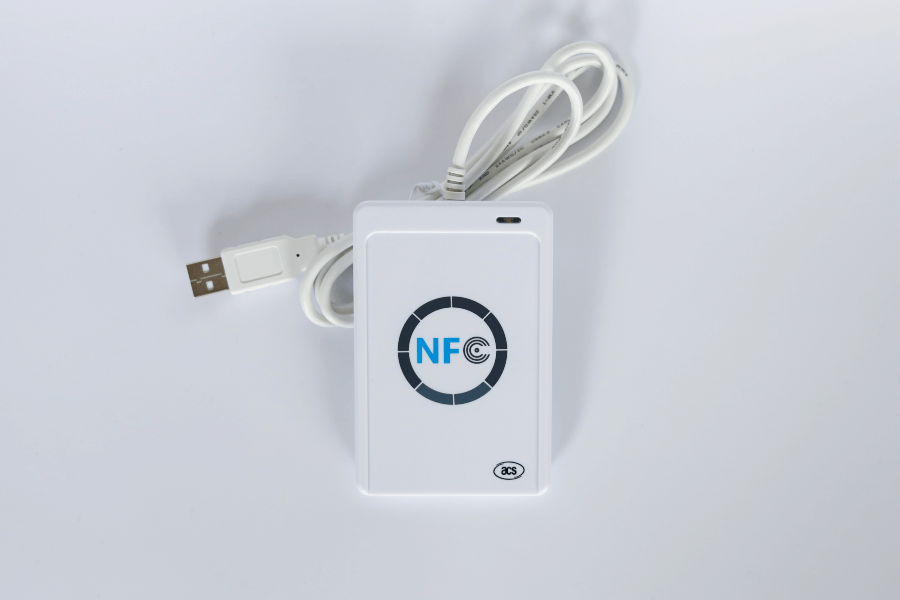No products in the cart.
NFC Products
Review products
Shopping Cart
What is RFID?

RFID technology is now everywhere, from stores and factories to your own wallet. But what exactly is RFID? How does it work and why is it becoming increasingly popular? In this blog we explain everything about RFID, how the technology works and what advantages it offers. So you get a good overview of the possibilities and understand why so many companies are investing in it.
Table of contents
How does the RFID work?
RFID stands for Radio Frequency Identification, a technology that allows information to be read and stored wirelessly. This is done via a microchip (tag) and a reader (scanner). The tag contains data that the reader can read remotely using radio waves. This makes it possible to easily identify and track objects or people with an RFID tag, without the need for direct contact. Handy, right?
The benefits of RFID technology
RFID offers numerous advantages, especially in terms of speed, convenience and efficiency. Here are some of the key benefits listed:
1. Fast data transfer
RFID tags can transmit data almost instantly, without manual scanning or inputting. This makes processes such as inventory management or access control faster and more efficient.
2. Reading multiple tags at once
Unlike barcodes, RFID readers can scan multiple tags simultaneously. Ideal for environments where many products or items need to be identified at once, such as in warehouses.
3. Better security and control
Because RFID tags can contain unique data, it is easier to spot forgeries or prevent loss. Consider, for example, access control in buildings, where only those with an authorized tag are granted access.
4. No physical line of sight required
RFID tags can be read without the reader having to "see" the tag. This means you can place the tag in a bag, box or behind an object and still read the data.
Different types of RFID systems: passive vs. active
RFID systems come in two main types: passive and active systems. Passive RFID tags do not have their own power supply and draw energy from the reader to send signals back. This makes them affordable and compact, but they do have a shorter range. Active RFID tags, on the other hand, have a built-in battery that allows them to transmit data over longer distances. Active tags are often used for applications that require tracking over long distances, such as tracking vehicles or large objects in a warehouse.
Where RFID is all applied
You see RFID technology in a variety of industries. RFID is hugely popular in:
- Retail: RFID is being used to track inventory, prevent theft and even speed up the checkout process. This allows stores to be more responsive to customer needs and manage inventory more accurately.
- Healthcare: RFID plays an important role in tracking medical devices, patient records and medications, contributing to the safety and efficiency of healthcare processes.
- Event management: Many events and festivals use RFID wristbands as tickets and payment methods, reducing wait times and increasing security.
- Logistics and warehouse management: RFID is used in warehouses and distribution centers to track products throughout the supply chain. This allows companies to accurately locate goods and optimize the inventory process.
The advantages of RFID over traditional barcodes
Bar codes are still widespread, but RFID offers several important advantages. For example, an RFID reader can scan multiple tags simultaneously without physical line-of-sight, whereas a barcode must be scanned individually and at line-of-sight distance. RFID can also hold more information than a barcode and offers better security because data in the tag can be encrypted. This makes RFID technology a more sustainable and efficient alternative to bar codes, especially in complex business processes.
The difference between RFID and NFC
You may have heard of NFC technology before. Although RFID and NFC both work with radio waves, there are differences. NFC (Near Field Communication) is actually a subcategory of RFID, but works at shorter distances and often interacts in both directions. NFC is often used in applications that require more direct interaction, such as contactless payment and digital business cards.
Companies successfully using RFID
RFID technology is being used by big names worldwide. Here are some successful examples:
- Zara: This retailer uses RFID in its stores to track inventory levels in real time. This helps Zara replenish inventories quickly and ensure that popular items are always available.
- Amazon Go: In these cashier-less stores, Amazon uses RFID and other technologies to record purchases automatically, so customers can easily walk in, grab products and leave without passing by a checkout counter.
- FedEx and UPS: Both logistics giants use RFID to track packages worldwide. This increases efficiency and provides customers with accurate information about the status of their shipments.
Tips for implementing RFID in your business
If you are considering implementing RFID technology in your business, here are some important points to consider:
- Determine your goals and needs
What do you want to achieve with RFID? Improve inventory management, increase security, or streamline logistics? Clear goals will help you choose the right solution.
- Analyze the costs and benefits
RFID has higher initial costs than barcodes, but can save a lot in the long run through increased efficiency and fewer errors. A cost-benefit analysis provides insight into the true value to your business.
- Choose the right system (passive or active)
Depending on the application, a passive or active tag may be a better fit. Also consider the environment in which the tags will be used, such as whether they need to be resistant to certain weather conditions or chemicals.
- Enlist expertise
RFID can be complex to implement. Therefore, it may be wise to engage a specialist, such as NFC World, to guide the process and ensure you get the most out of your investment.
RFID technology to optimize your business
With RFID, you can automate processes, save time and better manage data. RFID is a smart move for companies looking to cut costs, improve logistics or easily manage data. At NFC World, we have the knowledge and tools to support you in this. In addition to NFC products, we also offer solutions based on RFID technology. We think along with you and are happy to help you make the most of the benefits of this innovation.
Buy RFID tagsWhat is RFID?
RFID stands for Radio Frequency Identification and is a technology consisting of RFID tags that can communicate with each other through an electromagnetic field. An RFID chip can transmit and receive radio waves and this makes it possible to put certain data on an RFID tag. This data can be sent when the chip is scanned. RFID can communicate over a distance of up to 8 meters and NFC technology can only communicate at short distances, about up to 10 centimeters.
How does RFID work?
An RFID tag, which is often small and placed on a product or item, contains unique data that can be retrieved by the reader. The reader sends out a radio frequency signal and receives the tag's information over the same frequency. This makes it possible to automate the identification and tracking of products or assets.
What are the differences between RFID and a barcode?
RFID is also known as the new bar code. Both technologies have similarities, yet are quite different. A barcode must be physically scanned from a short distance. It must be completely visible or the code cannot be scanned. You can only scan one bar code at a time, and a bar code is easily manipulated by people who want to do harm with it. An RFID chip, on the other hand, can be scanned at a distance of up to 8 meters. No tag is required, and thus the chip need not be visible during scanning. Multiple chips can be scanned simultaneously and it is not possible to manipulate the chip.
What are the possibilities of RFID?
There are a variety of applications possible with RFID technology. Examples of applications include inventory of products, timekeeping of employees, security and access to certain areas or systems and tracking of goods. For product inventory, it is possible to precisely monitor inventory and recognize and deter theft. For timekeeping, employees can be provided with an RFID key fob. Security systems can be operated with RFID chips, allowing alarms to be turned on and off. When tracking goods, RFID tags can be used to accurately track where an item is and where it is going.
Don't miss anything and read all about NFC
Our most popular products
Reviews
★★★★★
Very satisfied with the serviceThe NFCW passes are a great example of how to use Sustainable Technology and still make an impact. We are very pleased with the service and quick response times.
Vera Timmermans - Evoke Staffing★★★★★
Quick response to inquiriesQuick response to questions. The dashboard is clear and easy to manage.
Shui Yi van de Laar - Endenburg Electrical Engineering★★★★★
Good price quality & Excellent serviceGood value for money & excellent service. Tickets were lost by mail but a solution was worked out together.
Bjorn Andelhofs - Topcon Positioning★★★★★
Very customer friendlyGood communication and fast service. Very customer friendly, and the site is easy and clear.
Astrid van Heinsbergen - HG International★★★★★
Very satisfied!We are very satisfied with our NFC business cards from NFC World. The dashboard is user-friendly and the cards are easy to use.
Natacha Wuestman - Wuestman★★★★★
The cards work easily and very wellThe cards work easily and very well. This way we are more sustainable, because we do not have to order 100's of paper business cards for our colleagues.
Eva Hartman - Lycens BVGive 20%, Get 20% 🎁
Give your friends 20% off their next order. And we'll give you 20% off for every successful referral.
Invite friendsAll our products are subject to our terms and conditions. All prices include VAT and other taxes and exclude any shipping and service charges. You can read how we handle cookies in our privacy policy.
